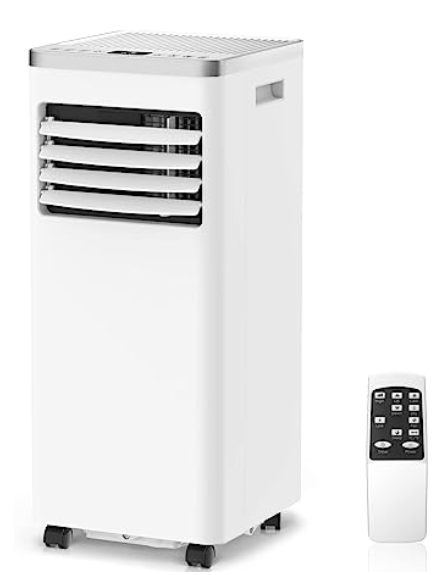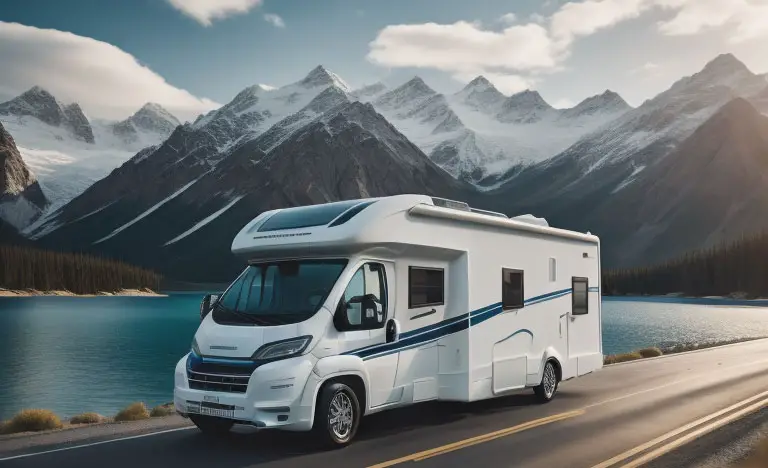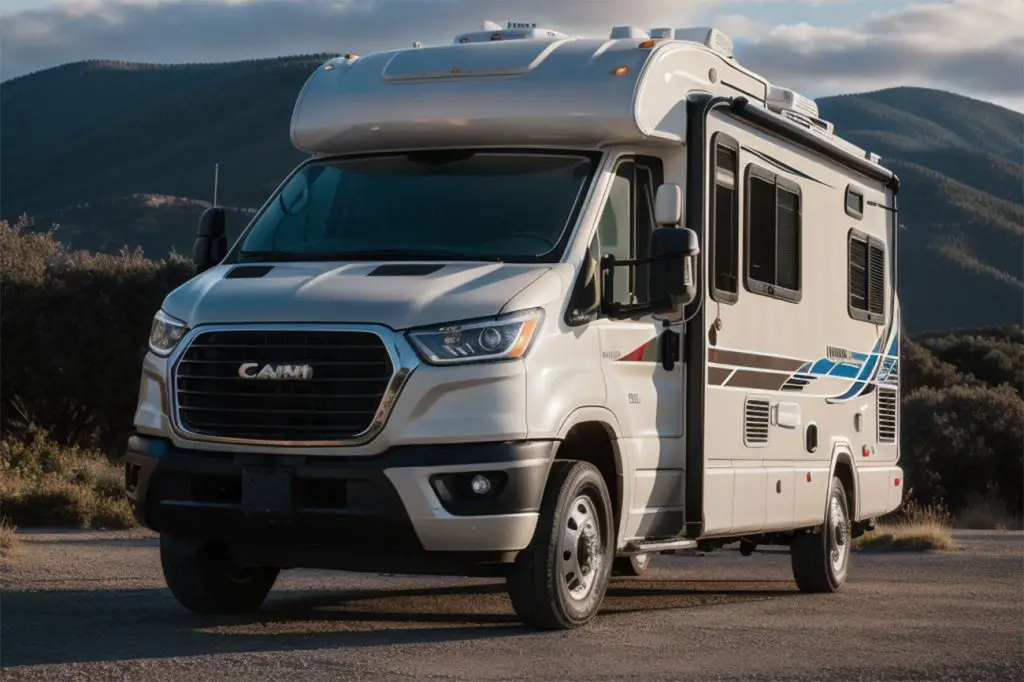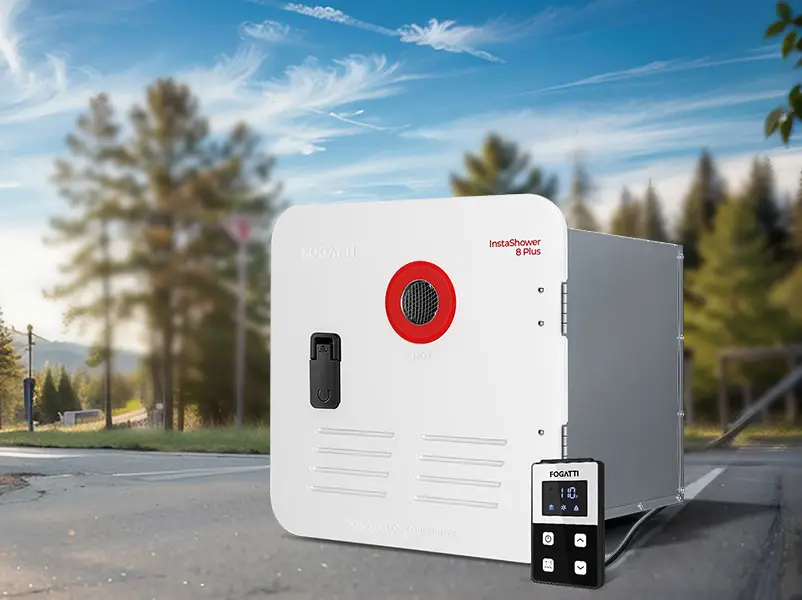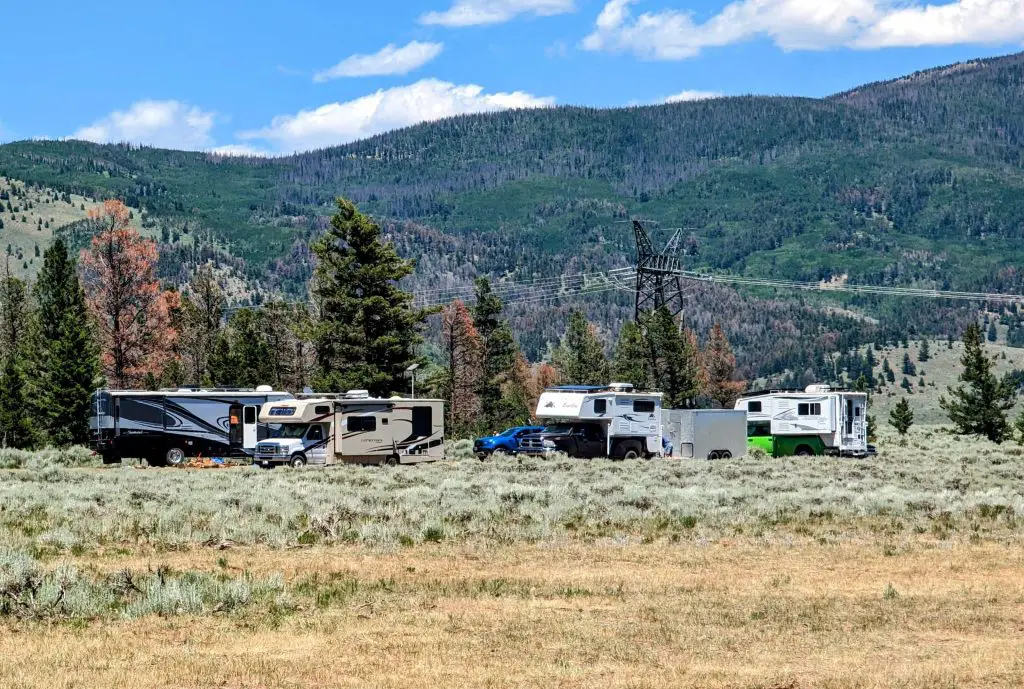Last Updated on February 13, 2024
Key Takeaways:
- Portable AC Benefits: Small, portable air conditioners offer efficient cooling with lower power demands and easy installation, making them ideal for smaller RVs or trailers.
- Choosing the Right Unit: Consider factors like cooling capacity, power source compatibility, noise level, energy efficiency, portability, and additional features when selecting a portable AC for your RV.
- Installation Tips: Proper installation involves reading the manual, ensuring correct venting (especially for window types), securing placement, and considering electrical connections.
- Advantages: Portable AC units are easy to install, portable, cost-effective, energy-efficient, and versatile for various cooling needs.
- Disadvantages: They may have limited cooling capacity, generate noise, require floor space for installation and venting, consume more energy than central AC systems, and need regular maintenance.
- Maintenance: Regular maintenance includes cleaning or replacing filters, clearing debris from vents, managing condensate drainage, inspecting and cleaning coils, checking and tightening connections, and proper storage when not in use.
While larger RVs often come equipped with built-in air conditioning systems, smaller RVs or trailers may lack this luxury. Running traditional RV AC units can be challenging, especially when off-grid or without access to electrical hookups. However, there’s a delightful alternative – consider opting for a smaller and more portable air conditioning solution that consumes less power.
By choosing a compact and portable air conditioner, you can enjoy the comforts of cooling without the heavy power requirements. These units are designed to operate efficiently and effectively, making them a fantastic option for smaller RVs or trailers. Unlike traditional RV ACs that demand substantial electricity, these portable alternatives allow for more flexible power sources.
In addition to their reduced power consumption, portable air conditioners are incredibly convenient and easy to install. Their compact size and lightweight nature make them perfect for small RVs or trailers, seamlessly fitting into limited spaces. Whether you’re embarking on a weekend getaway or a long-term adventure, these portable ACs provide a practical and efficient cooling solution that enhances your travel experiences.
These pint-sized powerhouses may be small in size, but some of them would be big on cooling power. From compact designs that fit in smaller places to sleek units that can be wheeled around the room, there’s a portable AC unit for every situation. And with advancements in technology, many of these units are now more energy-efficient than ever before, making them a smart choice for both your wallet and the planet. So if you’re looking for a cooling solution that won’t take up too much space I did some research so you don’t have to. Here is what I found:
How to Choose the Right Portable AC Unit for Your Needs
When it comes to choosing the right portable AC unit for your needs, there are many factors to consider, especially if you plan on using it in your RV. While portability and size may be important for any portable AC unit, you’ll want to look for specific features that cater to your RV’s needs and limitations. For example, you’ll want to pay attention to the unit’s BTUs (British Thermal Units) to ensure that it can effectively cool your RV’s square footage. You may also want to consider the unit’s weight and power consumption to make sure it’s compatible with your RV’s electrical system. With so many different portable AC units on the market, it’s important to take the time to research and carefully evaluate your options to find the perfect fit for your RV’s cooling needs.
What to Consider When Buying a Portable Air Conditioner For Your RV
When purchasing a portable air conditioner for your RV, there are several important factors to consider to ensure a suitable and efficient unit. Here are some key considerations:
Size and Cooling Capacity
RVs come in various sizes, so it’s crucial to select a portable air conditioner with the appropriate cooling capacity to match the size of your RV. Consider the BTU rating (British Thermal Units) of the unit, which indicates its cooling power. Larger RVs will require a higher BTU rating, while smaller RVs can be adequately cooled with a lower BTU rating.
Power Source
Determine the power source available in your RV. Portable air conditioners for RVs can be powered by various sources, including AC power from RV hookups, onboard generators, or DC power from batteries or inverters. Ensure that the portable air conditioner you choose is compatible with the power source available in your RV.
Installation and Venting
Consider the installation process and venting requirements of the portable air conditioner. Some units may require window or roof venting, while others may have built-in venting systems designed specifically for RVs. Ensure that the installation process aligns with your RV’s setup and that the venting options are suitable for your specific needs.
Noise Level
Noise can be a concern in the confined space of an RV. Look for portable air conditioners with low noise levels, especially if you plan to use the unit while sleeping or engaging in quiet activities. Check the decibel (dB) rating provided by the manufacturer to gauge the noise level of the unit.
Energy Efficiency
Consider the energy efficiency of the portable air conditioner to minimize power consumption and maximize energy savings. Look for units with high Energy Efficiency Ratio (EER) ratings, as they indicate better energy efficiency. This can help you conserve battery power or reduce the load on your generator when running the air conditioner.
Portability and Space-Saving Design
Since RVs have limited space, consider the size and portability of the portable air conditioner. Look for compact and lightweight units that are easy to move and store when not in use. Portable air conditioners with built-in handles or caster wheels are convenient for transportation within the RV.
Additional Features
Consider additional features that may enhance your RV air conditioning experience. This could include features such as programmable timers, remote control operation, adjustable airflow direction, dehumidification mode, or sleep mode for energy-saving operation during the night.
[amazon table =”11466″]
Tips for Installing a Small Portable Air Conditioner
Installing a small portable air conditioner involves several considerations to ensure proper operation and maximize cooling efficiency. Here are some tips for installing a small portable air conditioner:
Read the Manual
Start by thoroughly reading the manufacturer’s installation instructions and guidelines specific to your portable air conditioner model. This will provide detailed information on the recommended installation process, venting requirements, and any other important considerations.
Window Venting
Most small portable air conditioners require venting to expel hot air generated during the cooling process. Follow the manufacturer’s instructions to install the provided window kit or venting system. This typically involves attaching the exhaust hose to the unit and then fitting the other end of the hose into a window opening or specially designed venting panel. Ensure a tight and secure fit to prevent air leakage.
Sliding Window Considerations
If you have a sliding window, special window kits or panels may be available to adapt the window for venting the portable air conditioner. Consult the manufacturer’s instructions or consider using alternative methods such as plexiglass or foam insulation to create a proper seal.
Vertical Window Considerations
In the case of vertical windows or casement windows, you may need a different type of window kit or an alternative solution. Some portable air conditioner models come with specific kits or accessories for vertical window installations. Check the manufacturer’s recommendations or consult with a professional if needed.
Insulation and Weather Stripping
Ensure proper insulation and weather stripping around the window or venting panel to prevent warm air from infiltrating the cooled space. This will improve cooling efficiency and reduce energy consumption. Use foam insulation, weather stripping, or other suitable materials to seal any gaps or openings around the window or panel.
Secure Placement
Place the portable air conditioner on a stable and level surface, preferably close to the window or venting area. Ensure the unit is secure and cannot tip over during operation or movement. Some models come with brackets or accessories to assist in securing the unit to prevent accidental falls.
Electrical Considerations
Ensure the portable air conditioner is connected to a suitable electrical outlet that can handle the unit’s power requirements. Avoid using extension cords or adapters unless specifically recommended by the manufacturer. Check the electrical load capacity of the circuit to prevent overloading.
[amazon box =”B0C1RD5HCR”]
Portable AC Units Advantages
Portable air conditioning (AC) units offer several advantages, especially in situations where traditional central AC systems are not available or practical. Here are some key advantages of portable AC units:
Easy Installation
Portable AC units are designed for easy and hassle-free installation. They typically come with a window kit or venting system that can be quickly set up without the need for professional assistance. This makes them a convenient cooling option for renters or people who frequently move homes.
Mobility and Portability
As the name suggests, portable AC units are easily movable from one room to another. They are typically mounted on wheels, allowing you to move them around as needed. This flexibility enables you to cool specific areas or rooms, depending on your preference and immediate cooling requirements.
No Permanent Installation
Unlike central AC systems, portable units do not require any permanent installation, such as ductwork or modifications to the building structure. They can be set up and used without any major alterations to the space, making them suitable for temporary cooling or situations where permanent modifications are not feasible.
Cost-Effective Cooling
Portable AC units are generally more affordable than installing or upgrading central AC systems. They provide a cost-effective solution for cooling specific rooms or smaller spaces, without the need to cool the entire house. They are particularly useful for cooling areas where you spend most of your time, helping you save on energy costs compared to running a central AC system throughout the entire home.
Energy Efficiency
Many modern portable AC units are designed with energy-efficient features. They often come with programmable timers, sleep modes, and energy-saving settings to optimize cooling while reducing energy consumption. Some models also have Energy Star ratings, indicating that they meet specific efficiency standards.
Supplemental or Temporary Cooling
Portable AC units are ideal for supplemental or temporary cooling needs. For example, they can be used in bedrooms at night or in home offices during the day, providing targeted cooling where it is needed most. They are also useful for cooling specific areas in apartments, dorm rooms, garages, or even outdoor spaces such as tents or RVs.
Versatile Use
Portable AC units are perfect for RVers. Their portability and easy installation make them adaptable for different cooling requirements.
[amazon box =”B0C1ZGV8FG”]
Portable AC Units Disadvantages
While portable air conditioning (AC) units offer several advantages, they also have a few disadvantages that should be considered before making a purchase decision. Here are some common disadvantages of portable AC units:
Limited Cooling Capacity
Portable AC units typically have lower cooling capacities compared to central AC systems. They are designed to cool smaller areas rather than an entire house or large spaces. If you have a large RV it might not work great for you.
Noise Level
Portable AC units tend to generate noise while operating. The noise level can vary between models, but it’s generally higher than central AC systems. This can be a concern, especially in quiet environments or when using the unit in areas where low noise levels are desired, such as bedrooms or offices.
Space Considerations
Portable AC units require floor space for placement and proper venting. This might be an issue if you have a very small RV. They usually come with an exhaust hose or window kit that needs to be installed to vent hot air outside. This may limit the available window options or require adjustments to the room layout. Additionally, the unit itself takes up floor space, which can be an inconvenience in smaller rooms or tight spaces.
Energy Efficiency
While portable AC units have become more energy-efficient over time, they can still be less efficient compared to central AC systems. Their design and portability can result in higher energy consumption. It’s important to look for models with higher Energy Efficiency Ratio (EER) ratings to ensure better energy efficiency.
Maintenance and Water Management
Portable AC units require regular maintenance to operate efficiently. They often have filters that need to be cleaned or replaced periodically to ensure optimal cooling performance. Additionally, portable AC units generate condensation as they cool the air, and managing the collected water can be a maintenance task. Some units have built-in reservoirs that need to be emptied regularly, while others offer options for continuous drainage.
Cost
While portable AC units are generally more affordable than central AC systems, they can still be a significant investment compared to other cooling options, such as fans or window units. If you require multiple units to cool multiple rooms, the cost can add up.
Aesthetics
Portable AC units, with their visible hoses and bulky appearance, may not be aesthetically pleasing to some individuals. Their design and presence in the room can impact the overall ambiance and décor.
Maintenance Tips for Small Portable Air Conditioners
Cleaning the Filters
Clean or replace the air filters regularly, as clogged filters can restrict airflow and reduce cooling performance. Refer to the manufacturer’s instructions for the recommended cleaning frequency and procedure. In general, rinse the filters with water or use a vacuum cleaner to remove dust and debris. Ensure the filters are completely dry before reinstalling them.
Clearing Debris
Check the air intake and exhaust vents regularly to ensure they are free from dust, dirt, or any obstructions. Clear away any debris or blockages that may impede proper airflow. This will help maintain optimal cooling performance.
Condensate Drainage
Portable air conditioners remove moisture from the air, resulting in condensate that needs to be drained. Some units collect condensate in an internal tank that requires regular emptying. Follow the manufacturer’s instructions to empty the condensate tank and ensure it is clean to prevent mold or bacteria growth. Alternatively, some units have continuous drainage options that allow you to connect a drain hose for automatic disposal of condensate.
Inspect and Clean the Coils
Over time, the evaporator and condenser coils of the portable air conditioner can accumulate dust and dirt, reducing their efficiency. Periodically inspect the coils and clean them if necessary. Use a soft brush or vacuum cleaner with a brush attachment to gently remove any debris. Be cautious when handling the coils to avoid damaging the delicate fins.
Check and Tighten Connections
Regularly inspect the connections, including the exhaust hose, window kit, and electrical connections, to ensure they are secure and properly fitted. Loose connections can result in air leakage or reduced cooling performance. If necessary, tighten or adjust the connections as recommended by the manufacturer.
Store Properly
If you plan to store the portable air conditioner when not in use, ensure it is cleaned and dry before storing. Follow the manufacturer’s instructions for proper storage recommendations, including covering the unit or placing it in a protective bag or cover to prevent dust accumulation.
Professional Servicing
Consider having the portable air conditioner professionally serviced at regular intervals, especially if you notice any issues or if it has been in use for an extended period. Professionals can perform a more in-depth inspection, clean internal components, and address any potential maintenance or repair needs.




